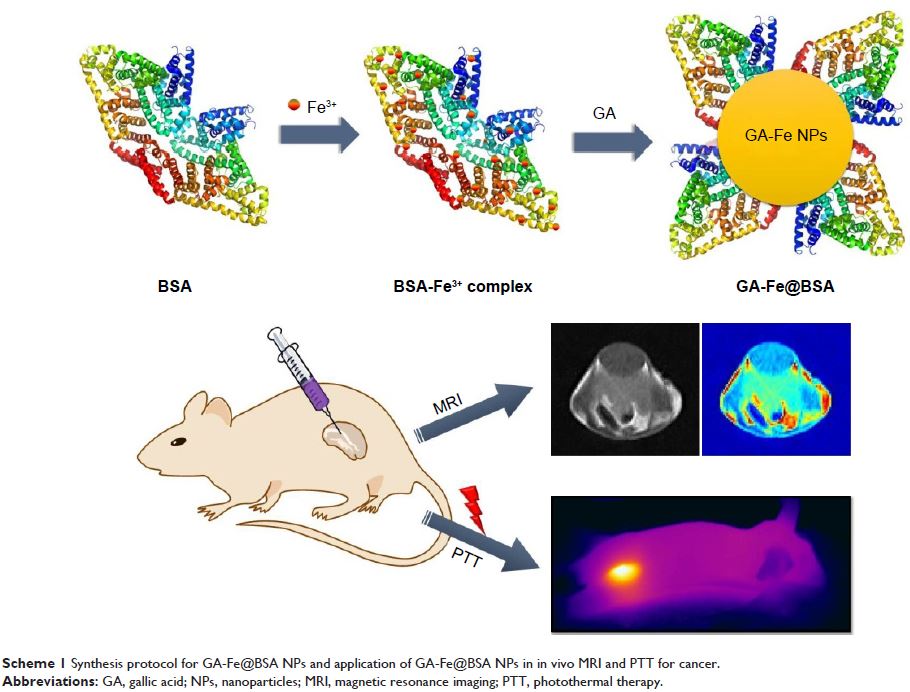9 7 8 1 6
论文已发表
注册即可获取德孚的最新动态
IF 收录期刊
- 3.3 Breast Cancer (Dove Med Press)
- 3.4 Clin Epidemiol
- 2.5 Cancer Manag Res
- 2.9 Infect Drug Resist
- 3.5 Clin Interv Aging
- 4.7 Drug Des Dev Ther
- 2.7 Int J Chronic Obstr
- 6.6 Int J Nanomed
- 2.5 Int J Women's Health
- 2.5 Neuropsych Dis Treat
- 2.7 OncoTargets Ther
- 2.0 Patient Prefer Adher
- 2.3 Ther Clin Risk Manag
- 2.5 J Pain Res
- 2.8 Diabet Metab Synd Ob
- 2.8 Psychol Res Behav Ma
- 3.0 Nat Sci Sleep
- 1.8 Pharmgenomics Pers Med
- 2.7 Risk Manag Healthc Policy
- 4.2 J Inflamm Res
- 2.1 Int J Gen Med
- 4.2 J Hepatocell Carcinoma
- 3.7 J Asthma Allergy
- 1.9 Clin Cosmet Investig Dermatol
- 2.7 J Multidiscip Healthc

辅助合成超低效没食子酸-Fe(III)配位聚合物纳米颗粒用于癌症治疗诊断
Authors Mu X, Yan C, Tian QW, Lin J, Yang S
Received 11 July 2017
Accepted for publication 25 August 2017
Published 3 October 2017 Volume 2017:12 Pages 7207—7223
DOI https://doi.org/10.2147/IJN.S146064
Checked for plagiarism Yes
Review by Single-blind
Peer reviewers approved by Dr Govarthanan Muthusamy
Peer reviewer comments 3
Editor who approved publication: Professor Dongwoo Khang
Abstract: Protein-related nanotheranostic agents hold great promise as tools to
serve many clinical applications. Proteins such as BSA are used to regulate the
synthesis of nondegradable inorganic nanoparticles (NPs). To fully employ the
potential of such proteins, a new type of biosafe nanotheranostic agent must be
designed to optimize BSA as a biomineralization agent. Here, a straightforward
BSA-assisted biomineralization method was developed to prepare gallic acid
(GA)–Fe(III) coordination polymer NPs. BSA-coated GA-Fe (GA-Fe@BSA) NPs were
ultrasmall (3.5 nm) and showed good biocompatibility, a lower r 2:r 1 ratio
(1.06), and strong absorption in the visible near-infrared region. T 1-weighted
magnetic resonance imaging of tumor-bearing mice before and after intratumoral
injection with GA-Fe@BSA NPs definitively demonstrated positive change. In a
subsequent in vivo study, antitumor activity was precipitated by intratumoral
injection of GA-Fe@BSA NPs combined with laser treatment, suggesting excellent
outcomes with this treatment method. These results describe a successful
protocol in which BSA regulated the synthesis of benign organic polymer NPs.
GA-Fe@BSA NPs have the potential to be ideal agents to be used in clinical
theranostic nanoplatforms.
Keywords: BSA,
MRI, gallic acid, coordination polymer, theranostics
